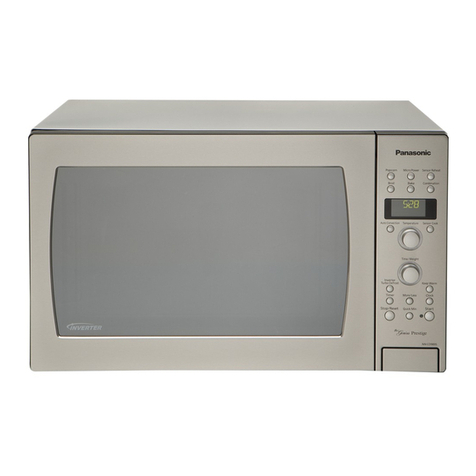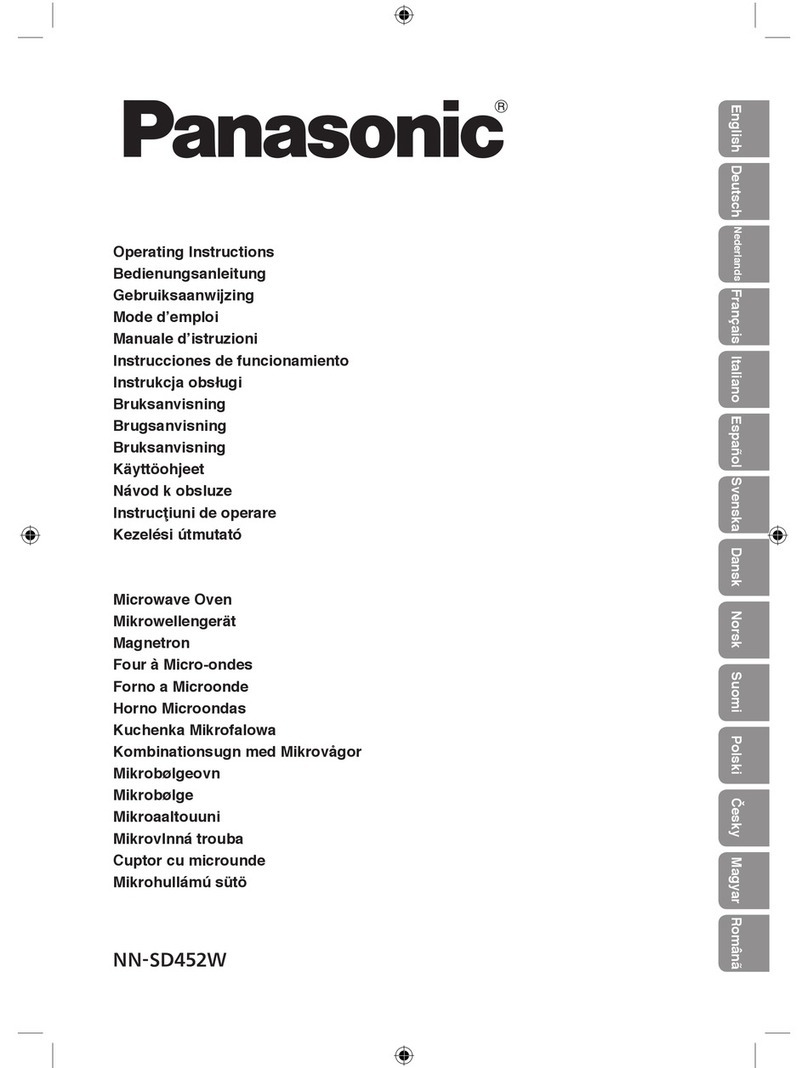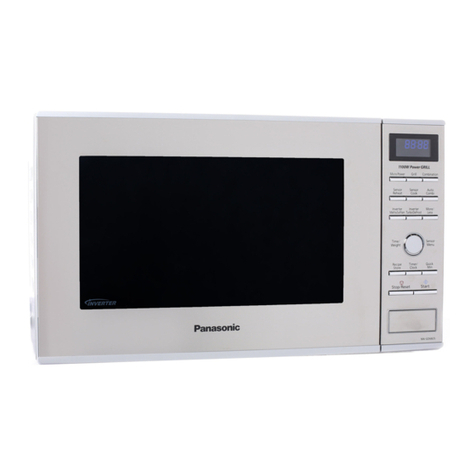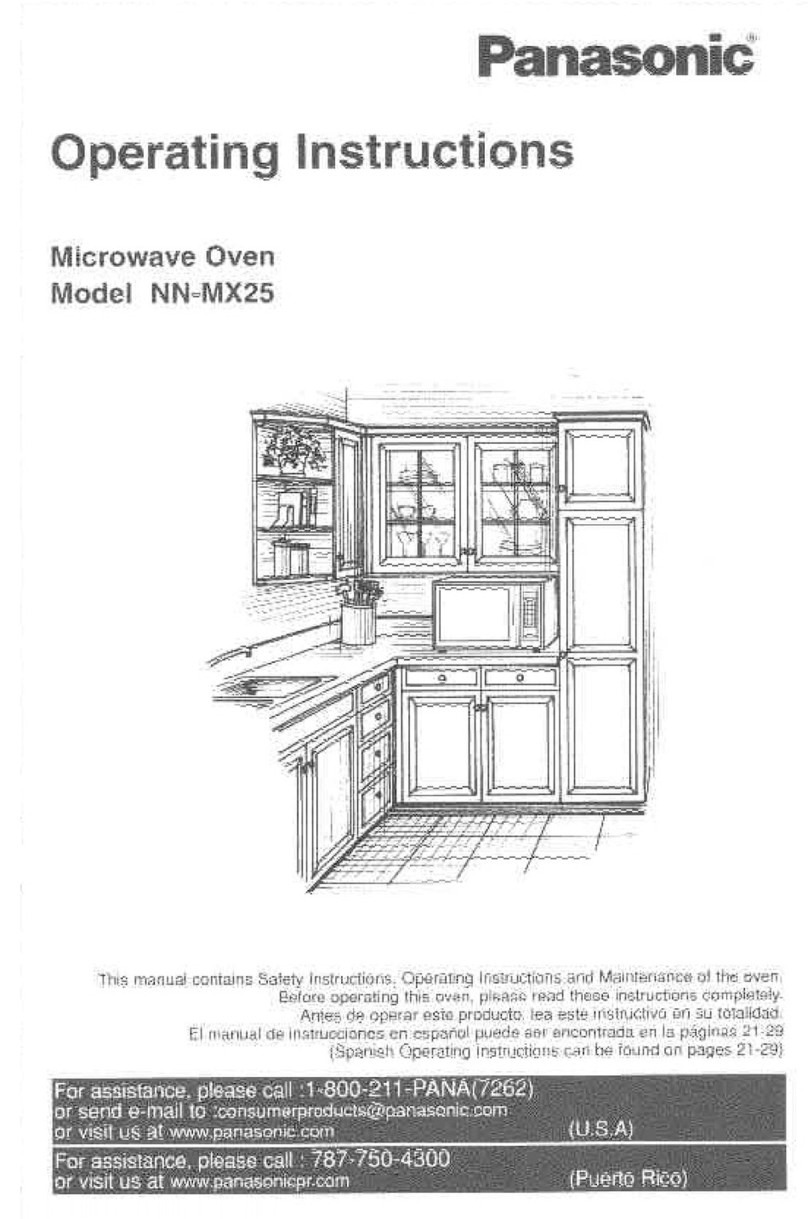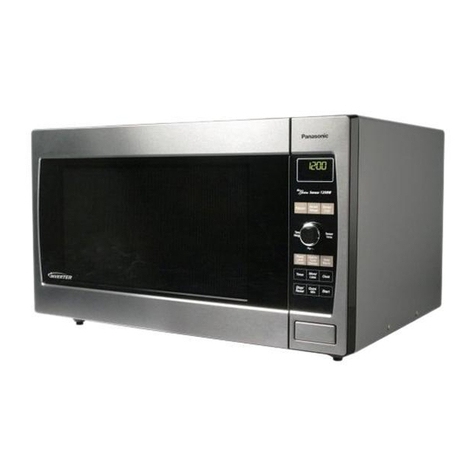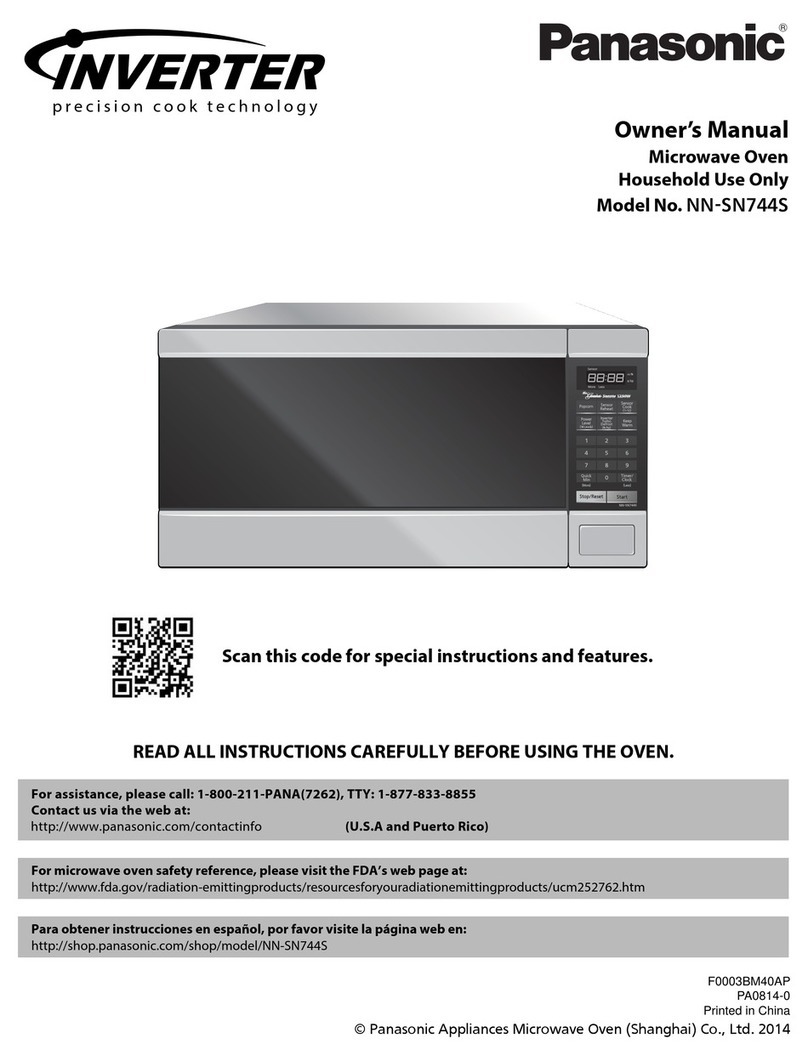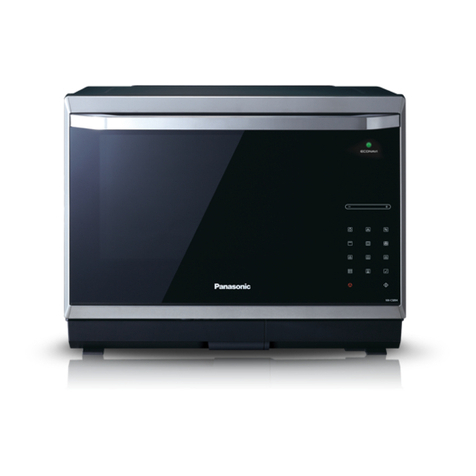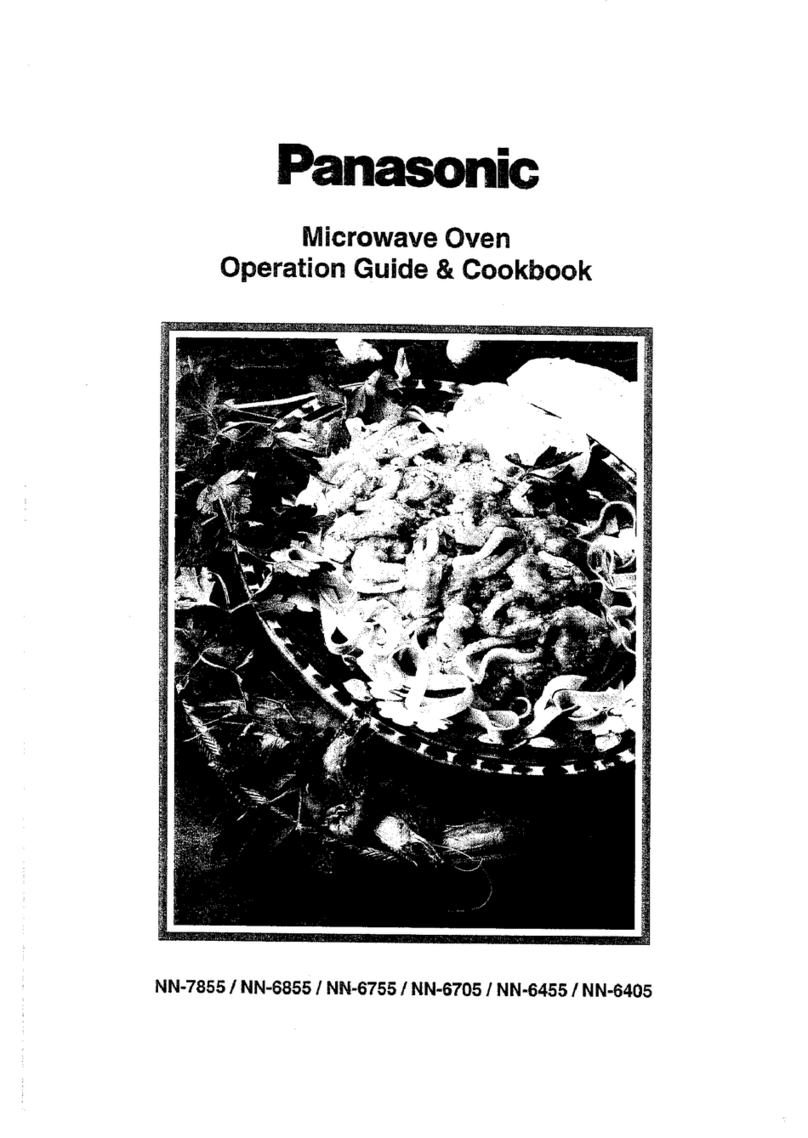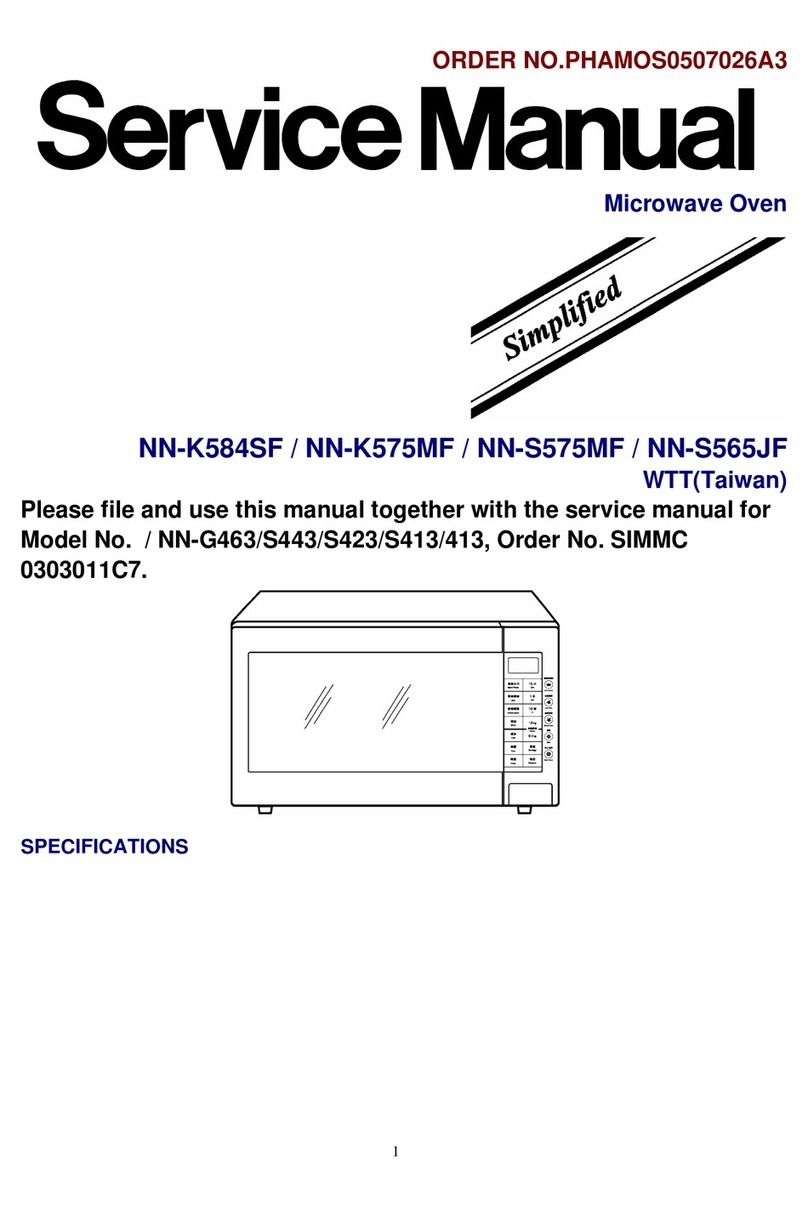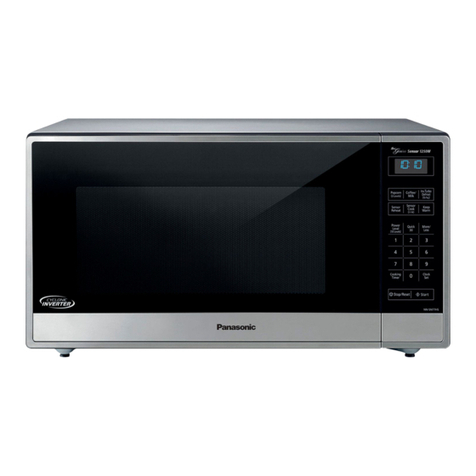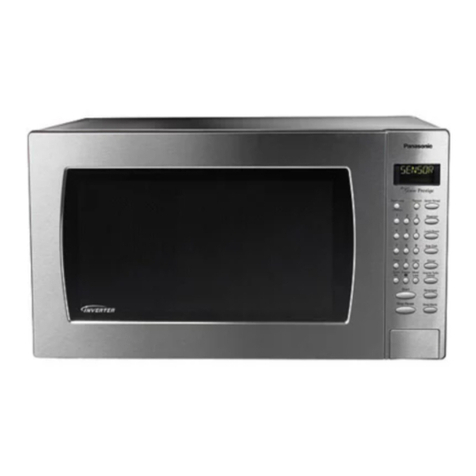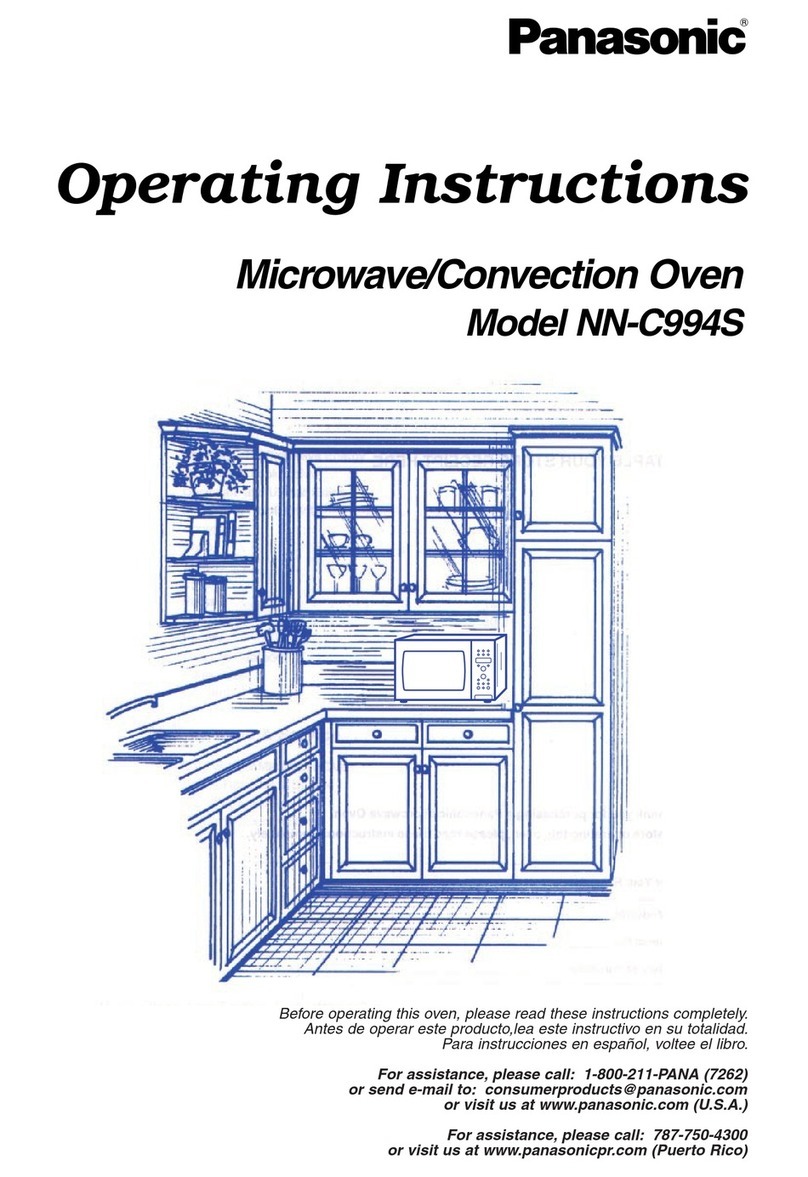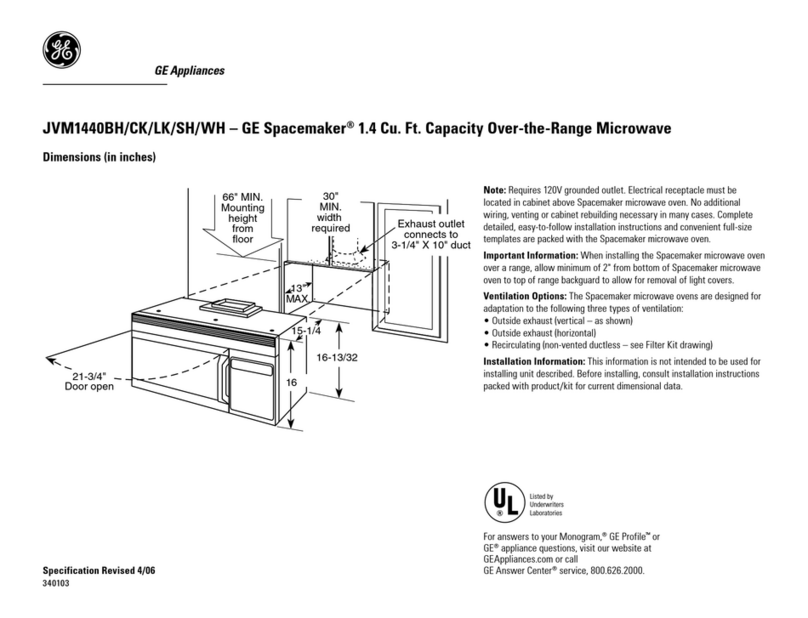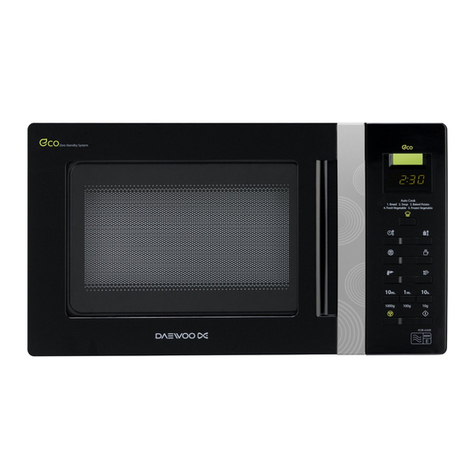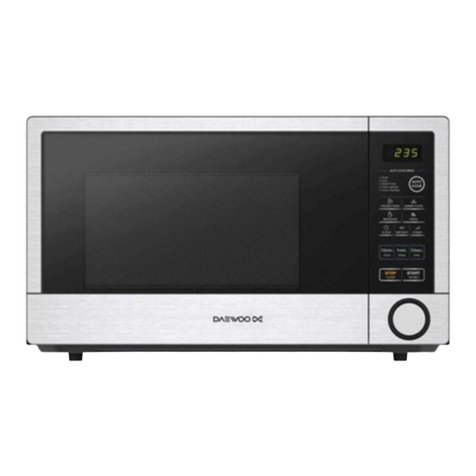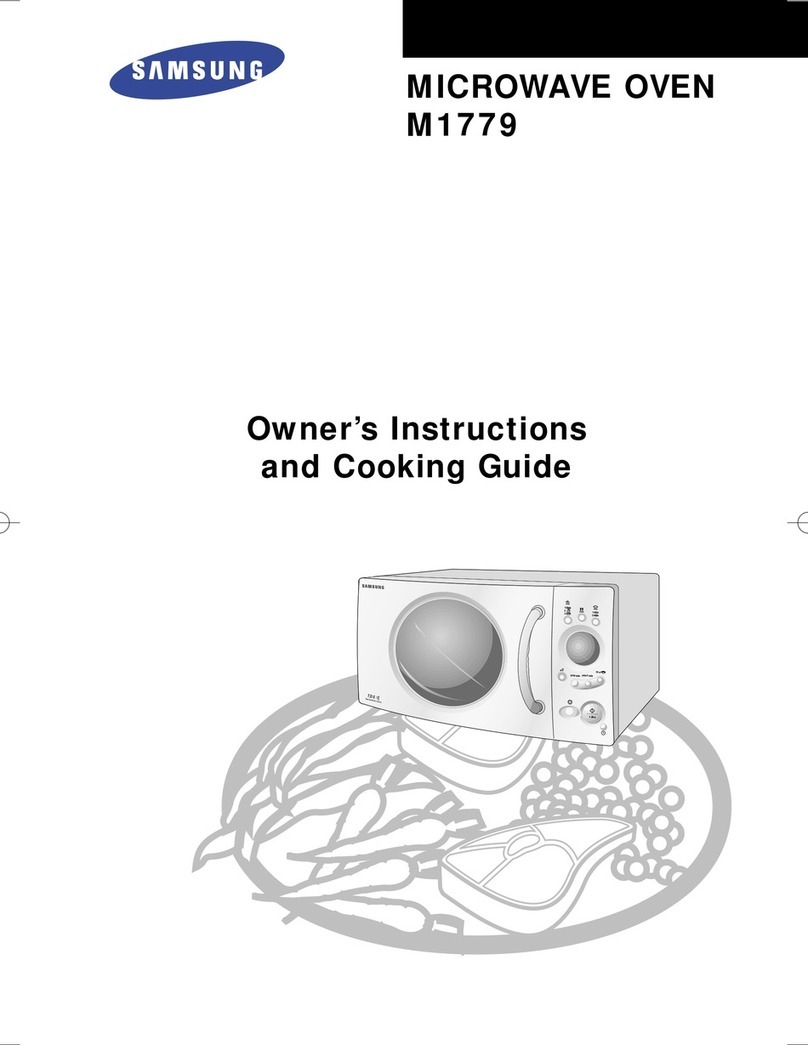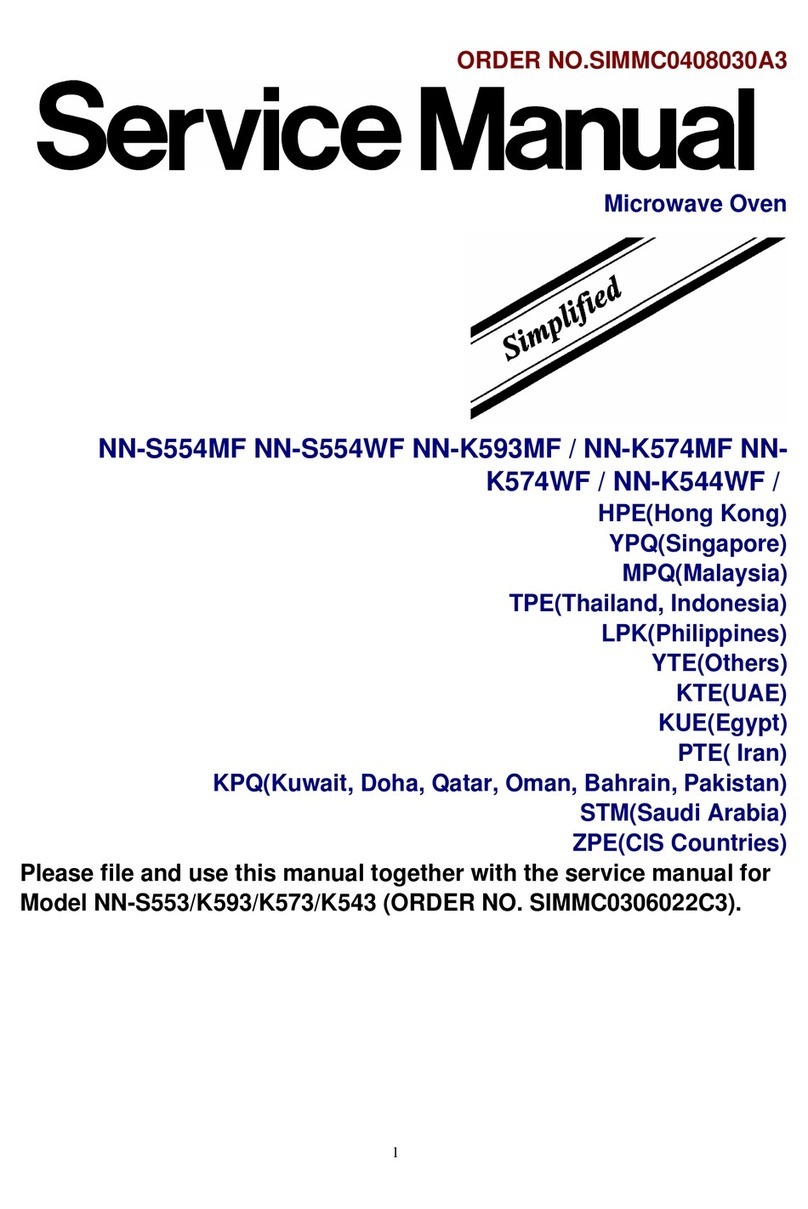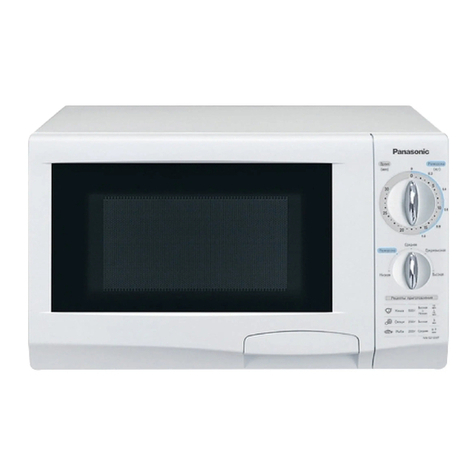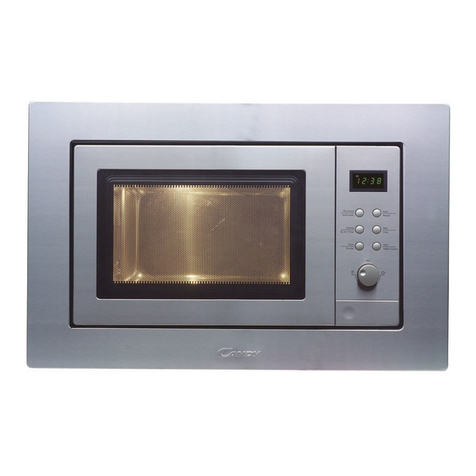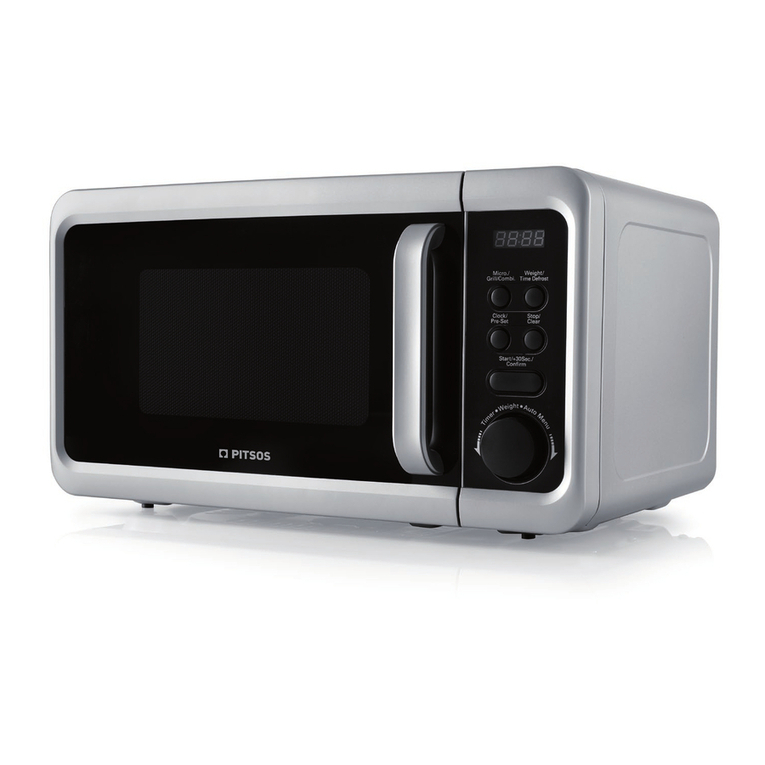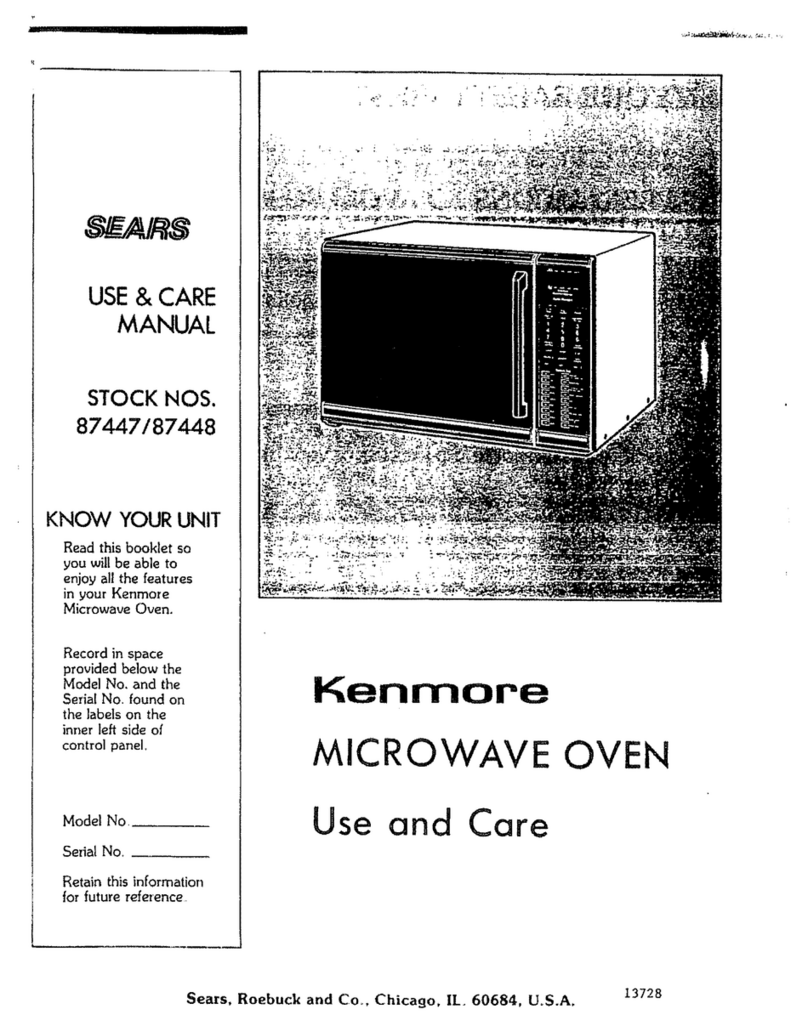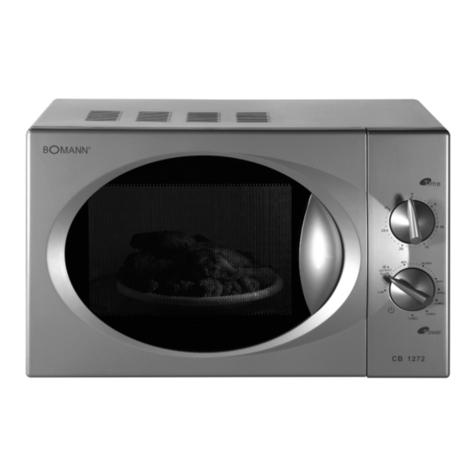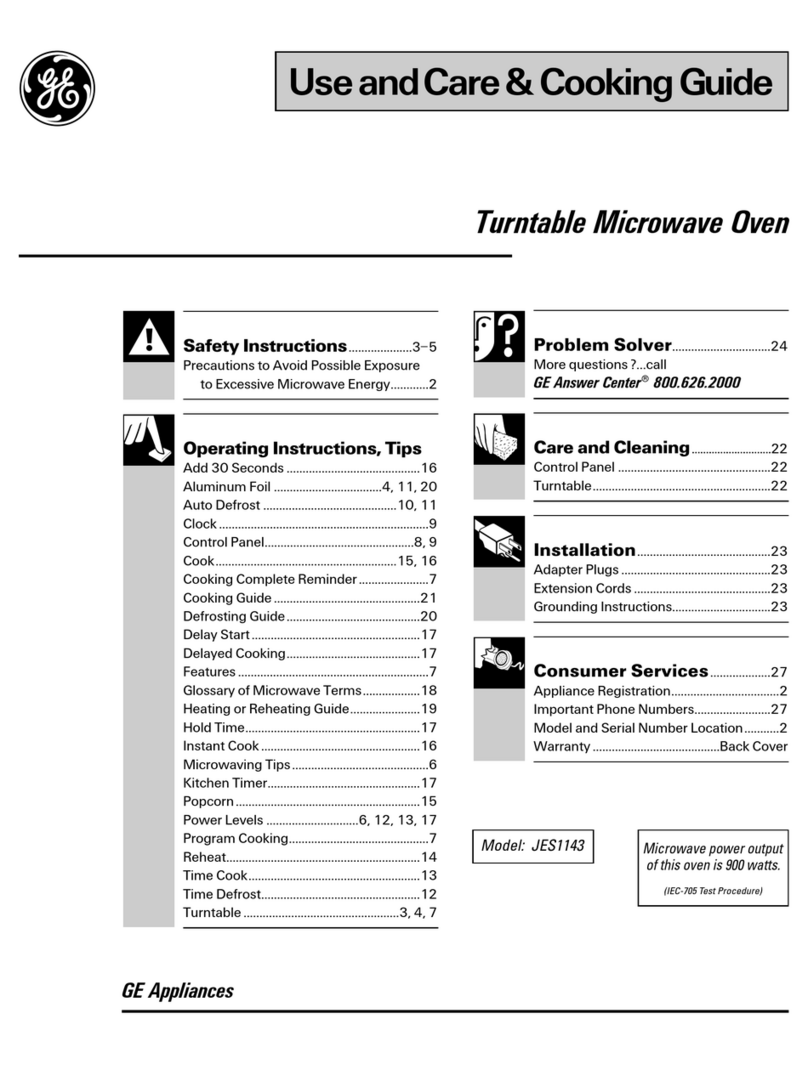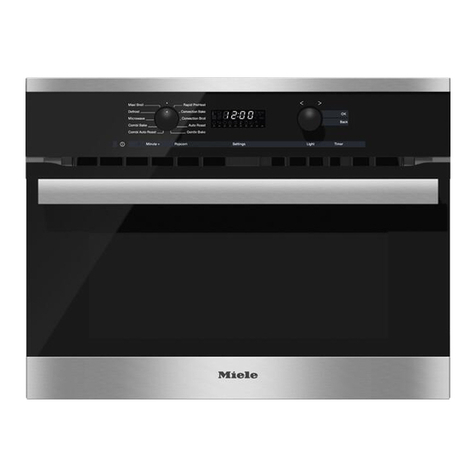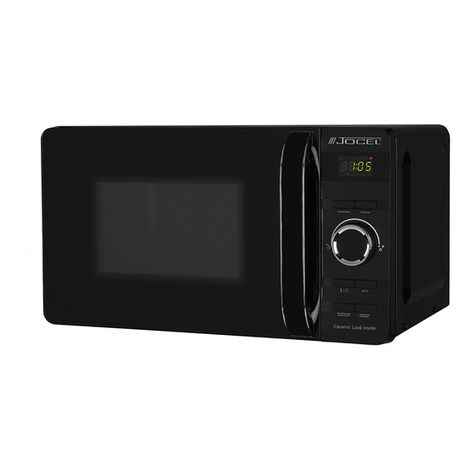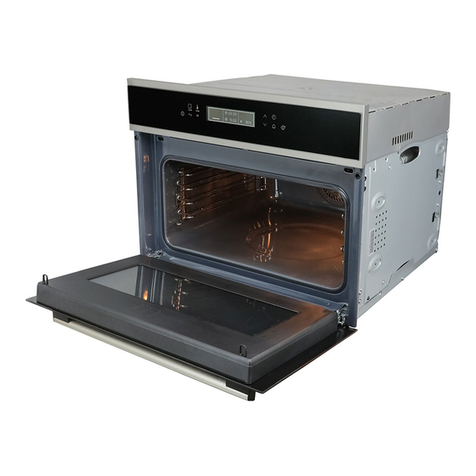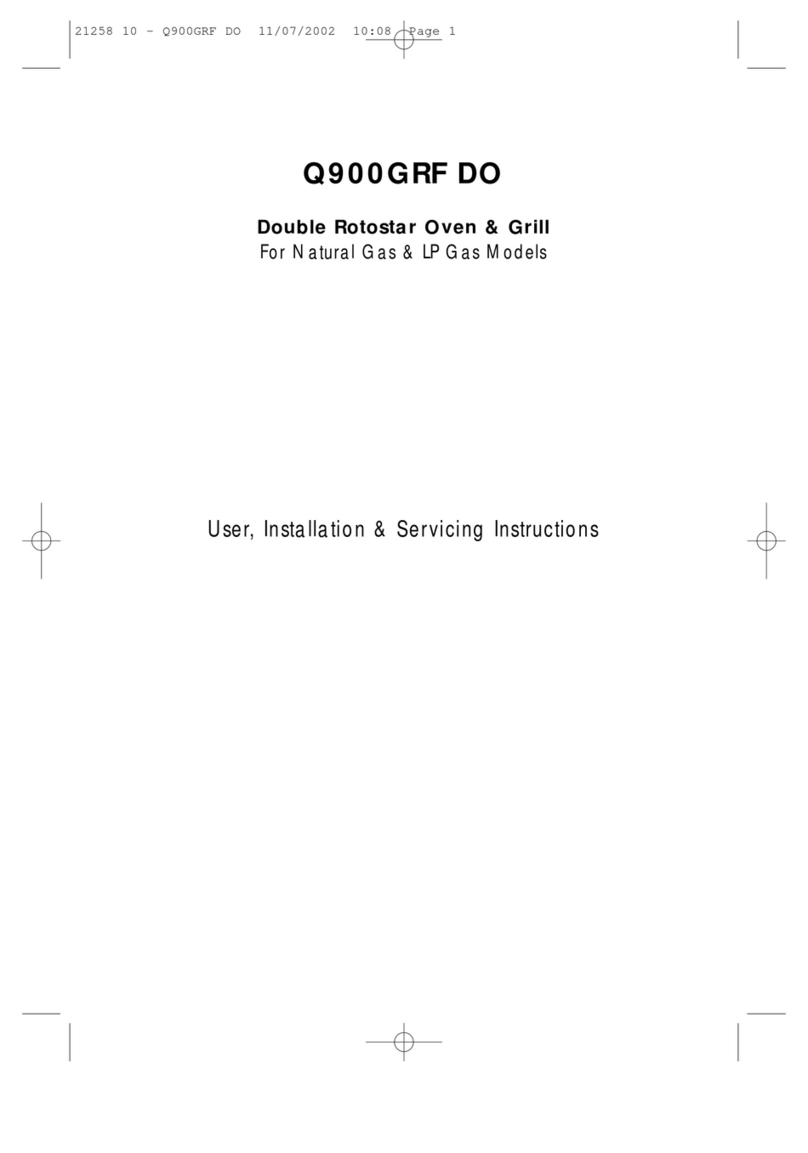4.1. Variable power cooking
control
High Voltage Inverter Power Supply (U) controls output power
by the signal from Digital Programmer Circuit (DPC). Power
relay always stays ON, but PWM (Pulse Width Modulation)
signal controls microwave output power.
NOTE:
The ON/OFF time ratio does not correspond with the
percentage of microwave power since approximately 2
seconds are required for heating of magnetron
filament.
Variable Power Cooking
POWER SETTING OUTPUT
POWER(%)
APPROX.
MANUAL MICROWAVE
DUTY
ON(SEC) OFF(SEC)
P10 (HIGH) 100% 22 0
P9 90% 22 0
P8 80% 22 0
P7 (MED-HIGH) 70% 22 0
P6 (MEDIUM) 60% 22 0
P5 50% 22 0
P4 40% 22 0
P3
(MED-LOW)/(DEFROST)
30% 22 0
P2 20% 15 7
P1 (LOW) 10% 8 14
Keep warm 25% 15 15
4.2. Inverter power supply circuit
The Inverter Power Supply circuit powered from the line
voltage, 120V 60Hz AC input supplies 4,000V DC to the
magnetron tube, and functions in place of the H.V. transformer,
the H.V. capacitor and H.V. diode.
1. The AC input voltage 120V 60Hz is rectified to DC voltage
immediately.
2. DC voltage will be supplied to the switching devices called
IGBT. These devices are switched ON-OFF by the 20 to 40
KHz PWM (pulse width modulation) signal from the
microcomputer in the DPC.
3. This drives the High voltage transformer to increase voltage
up to 2,000V AC.
4. Then the half-wave doubler voltage rectifier circuit,
consisting of the H.V. diodes and capacitors, generates the
necessary 4,000V DC needed for the magnetron.
5. Output power of the magnetron tube is always monitored by
the signal output from the current transformer built into the
inverter circuit.
6. This signal is fed back to the microcomputer in the DPC to
determine operating conditions and output necessary to
control PWM signal to the Inverter Power Supply for control
of the output power.
4.3. Auto Menu cooking
When the Auto Menu feature is selected and the [Start] button
is tapped:
1. The digital programer circuit determines the power level and
cooking time to complete cooking and indicates the
operating state in the display window. Table shows the
corresponding cooking times for respective serving by
categories.
Inverter Turbo Defrost
SELECTED WEIGHT COOKING TIME
1.0 kg 11 min. 15 sec.
Auto Reheat
SELECTED WEIGHT COOKING TIME
2 Serv 2 min. 55 sec.
2. When cooking time in the display window has elapsed, the
oven turns off automatically by a control signal from the
digital programmer circuit.
4.4. Combination cooking control
Combination cooking is accomplished by microwave and
convection cooking (bake heater).
1. During combination cooking, the digital programmer circuit
controls power relay RY5’s ON-OFF time. In all three
combination cooking categories, power relay RY1 always
stay on, but microwave ON-OFF time as shown in Figure.
COMBINATION
CATEGORY
OVEN TEMP MICROWAVE
DUTY ON
(Sec.)
DUTY OFF
(Sec.)
1 400°F(200°C) 6 16
2 350°F(180°C) 6 16
3 300°F(150°C) 6 16
The digital programmer circuit controls the ON-OFF time of
the heater in order to control oven cavity temperature.
2. After selecting desired combination level, setting cooking
time and pressing [Start] button, a high level signal comes
out of the micro computer and applies to power relay (RY5).
3. When RY5 is switched to ON, power source voltage is
applied to the bake heater, and the heater turn on.
4. The digital programmer circuit senses the oven cavity
temperature through oven temp sensor (thermistor). When
the oven temperature reaches the program preset
temperature, DPC stops supplying high level signal to the
power relay, and the bake heater turn off.
5. After the bake heater turn off, the oven temperature will
continue increasing for a while and then decrease as shown
in Figure below.
NOTE:
After combination cooking, fan motor rotates for 5
minutes to cool oven and electric components.
4 DESCRIPTION OF OPERATING SEQUENCE
8
NN-CS597S
